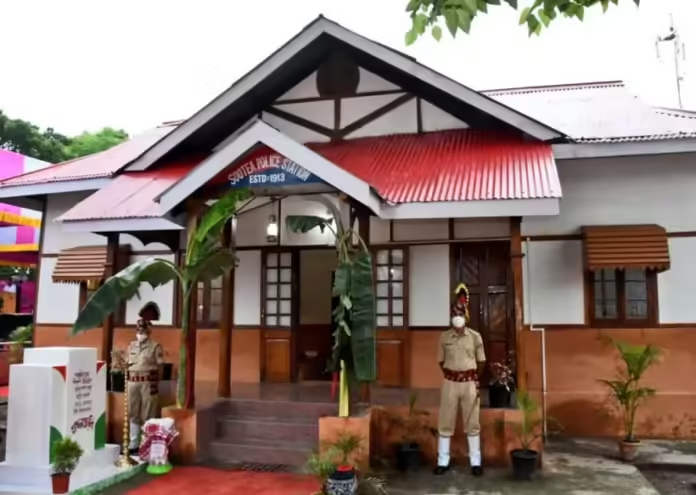In the annals of India’s struggle for independence, certain events and locations hold symbolic importance, capturing the spirit of resistance and resilience that characterized the era. One such significant location is the Sootea Police Station in Assam. This site is etched into the history of India’s freedom struggle due to its pivotal role in the events of August 1942, a period marked by intense and fervent activism.
The origins of what is now commemorated as “Sootea Diwas” date back to August 7, 1942, during a crucial session of the All India Congress Committee (AICC) held in Bombay. The session was a watershed moment in the Indian independence movement. Among the various resolutions passed during this session, one particularly momentous decision was to hoist the Indian tricolor at every police station across the country on September 20, 1942. This directive was emblematic of the broader Quit India Movement, which sought to force the British colonial government to leave India.
As part of the Quit India Movement, the Indian National Congress had mobilized widespread civil disobedience and unrest against British rule. The movement sought to harness popular sentiment and ignite a mass uprising to end colonial rule. The resolution to hoist the tricolor at police stations symbolized a direct challenge to British authority and an assertion of Indian sovereignty.
The Sootea Police Station in Assam became a focal point of this historic endeavor. On September 20, 1942, as per the directive, the tricolor was hoisted at the Sootea Police Station. However, the event was met with a violent response from the colonial authorities. The police station faced fierce resistance from local freedom fighters and the general populace, who were resolute in their commitment to the cause of independence.
The confrontation at Sootea Police Station was part of a broader pattern of resistance that unfolded across various parts of India during this period. The bravery and determination displayed by the people of Assam were reflective of the widespread national fervor for independence. The resistance in Sootea was not just a localized affair but a manifestation of a collective struggle that spanned the entire subcontinent.
In the aftermath of the events at Sootea Police Station, the British authorities cracked down hard on the participants. Many were arrested, and severe penalties were imposed. Despite the repression, the spirit of resistance did not wane. The Sootea incident became a powerful symbol of the courage and sacrifice of those who fought for India’s freedom.
Today, the Sootea Police Station stands as a testament to the sacrifices made by countless individuals in their quest for freedom. The day of September 20, known as “Sootea Diwas,” is remembered with great reverence. It serves as a reminder of the sacrifices made by the people of Assam and their contribution to India’s struggle for independence.
The legacy of Sootea is preserved not only in historical records but also in the collective memory of the Indian people. It underscores the importance of remembering and honoring the heroes of the freedom struggle, whose efforts paved the way for the country’s liberation from colonial rule.
The Sootea Police Station’s significance extends beyond the historical event itself. It represents the broader narrative of India’s fight for freedom, characterized by acts of defiance, solidarity, and unwavering commitment to the cause of independence. As India continues to celebrate its freedom and reflect on its past, the story of Sootea remains a poignant reminder of the nation’s journey towards self-determination and the enduring spirit of its people.




